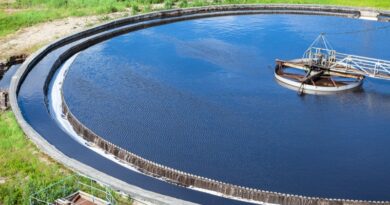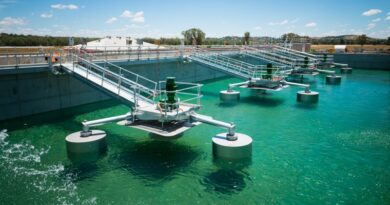MIT research team uses graphene foam to filter heavy metal from tap water

Adding to ongoing research on ways to remove contaminants from water supply sources, a team of researchers from the US-based Massachusetts Institute of Technology (MIT) has devised a highly efficient method for removing uranium from drinking water.
The MIT-led research team has developed graphene foam into a device that can extract uranium and other heavy metals from tap water. While several kindfs of contaminants including algal blooms and plastics foul rivers, lakes and other contaminants are not so readily apparent and largely remain invisible.
Uranium is one such contaminant that can now be found flowing out of taps worldwide. It gets leached into water resources from mining operations, nuclear waste sites, or from natural subterranean deposits.
“Even small concentrations are bad for human health,” said Ju Li, the Battelle Energy Alliance Professor of Nuclear Science and Engineering and professor of materials science and engineering at MIT.
A team led by Li has devised a highly efficient method for removing uranium from drinking water. Applying an electric charge to graphene oxide foam, the researchers can capture uranium in solution, which precipitates out as a condensed solid crystal. The foam may be reused up to seven times without losing its electrochemical properties.
“Within hours, our process can purify a large quantity of drinking water below the EPA limit for uranium,” said Li.
The project was launched three years ago as an effort to find better approaches to environmental cleanup of heavy metals from mining sites. To date, remediation methods for such metals as chromium, cadmium, arsenic, lead, mercury, radium, and uranium have proven limited and expensive.
“These techniques are highly sensitive to organics in water, and are poor at separating out the heavy metal contaminants,” said Ahmed Sami Helal, a postdoc in the Department of Nuclear Science and Engineering. “So they involve long operation times, high capital costs, and at the end of extraction, generate more toxic sludge.”
To the team, uranium seemed a particularly attractive target. Field testing from the US Geological Service and the Environmental Protection Agency (EPA) has revealed unhealthy levels of uranium moving into reservoirs and aquifers from natural rock sources in the northeastern United States, from ponds and pits storing old nuclear weapons and fuel in places like Hanford, Washington, and from mining activities located in many western states. This kind of contamination is prevalent in many other nations as well.
An alarming number of these sites show uranium concentrations close to or above the EPA’s recommended ceiling of 30 parts per billion (ppb) — a level linked to kidney damage, cancer risk, and neurobehavioral changes in humans, an official statement said.
The team believes its low-cost, effective device could become a new kind of home water filter, fitting on faucets like those of commercial brands. “Some of these filters already have activated carbon, so maybe we could modify these, add low-voltage electricity to filter uranium,” said Li.
The researchers have already begun investigating broader applications of their method. “There is a science to this, so we can modify our filters to be selective for other heavy metals such as lead, mercury, and cadmium,” said Li. He notes that radium is another significant danger for locales in the United States and elsewhere that lack resources for reliable drinking water infrastructure.
“In the future, instead of a passive water filter, we could be using a smart filter powered by clean electricity that turns on electrolytic action, which could extract multiple toxic metals, tell you when to regenerate the filter, and give you quality assurance about the water you’re drinking.”



